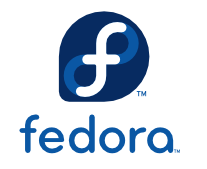GNU/Linux – A Brief History
A long long time ago, in the infancy of computer systems, operating systems were much different than they are today. It was not uncommon for early computer systems manufacturers to even develop their own operating systems. In the year 1969, a bunch of technicians from Bell Laboratories developed their own internal operating system, which became UNIX. It was popular amongst computer enthusiast, and many geeks tried to get access to computer systems running this hardcore operating system.
Eventually it was duplicated, licensed, and duplicated through a numerous bunch of projects. GNU was one of these projects. GNU was led by Richard Stallman, head of the Free Software Foundation. It’s goal was to create an operating system to replace Unix with a free, open-source system. It would be something you can run and modify for free. He referred this as being “free as in freedom”, rather than “free as in beer”. The GNU system was well developed, but still required a kernel. Initial efforts still utilized proprietary UNIX kernels in the back-end. Efforts were made to make a good free kernel, known as the HURD. However, a new kernel would soon
In 1992 a young Helsinki student named Linus Torvalds, who was independent of the Free Software Foundation, had the ambition to create his own Operating System. He wanted something to replace Minix, which is a university developed variation of UNIX. Linus wanted to create a Unix-Like system to run on his 386 PC system. To do this, Linus built a kernel, and combined it with the GNU Operating System in order to create GNU/Linux.
Today, GNU/Linux is a powerful, free, open-source operating system, available in a variety of bundled packages, called distributions, or distros for short. Examples of popular distros include Ubuntu, Debian GNU/Linux, CentOS, Slackware, Mandriva, Linux Mint, and many others.
What makes a distro?
A distro is a collection of a kernel and software to create an operating system. What makes each distro different from one-another primarily is the desktop environment, package system, and repositories used by the distro.
The Desktop Environment is a program used to draw the desktop, icons, windows, and graphics related functions. Most Desktop Managers run on X, which renders the graphics. Examples of popular desktop managers include TVM, Gnome, KDE, XFCE, LXDE, and Fluxbox. For more information on various desktop environments click here.
The Package System is used to install programs, verifying that the correct dependencies are met. For example if Program A requires Library A, then Program A will refuse to install unless Library A is detected. However, modern package systems are able to pull software from repositories if needed Package Systems include RPM (Red Hat), Deb (Debian/Ubuntu), and TGZ (Slackware). Without packaging systems, you would have to build all you software from source.
The Repository System is a collection of prebuilt software for the distribution. There are a few repo systems, including yum (Red Hat), Apt-Get (Debian/Ubuntu), and Installpkg (Slackware).
Recommended Distros
Each distribution has it’s pros and cons. Some are better for beginner Linux users, while others are more suited for Linux veterans.
Ubuntu – Linux for Human Beings
Difficulty:
Pros: Great for beginnersCons: Unity is a resource hog and is bad for older hardware
Alternatives to Ubuntu are availible for those who loathe Unity. These include
- Kubuntu – KDE
- Xubuntu – XFCE
- Lubuntu – LXDE
Linux Mint
Difficulty: EASY
Pros: Good alternative to Ubuntu, yet based on Ubuntu. Multiple desktop managers availible. Non-Open Source codecs includedCons: doesn’t include newer Desktop Managers
Slackware
Difficulty: DIFFICULT
Pros: Great for older processors and users who enjoy a hands on operating systemCons: Can have a steep learning curve for beginners. Comes with Linux 2.6 (Old)

Difficulty: EASY
Fedora (Formerly Red Hat and Fedora Core)
Pros: Uses RPM package manager, which is the Linux Standard Base
Cons: Not as user friendly as Ubuntu

Debian GNU/Linux
Difficulty: DIFFICULT
Pros: Customizable, and uses deb packages (like Ubuntu). Minimalistic
Cons: Stable releases are less often (increased stability)

Gentoo Linux
Difficulty: NIGHTMARE MODE
Pros: Customizable and based on the FreeBSD portage system
Cons: For hardcore users only. Beginner users will be easily intimidated.
Need Help?
If you are stuck with Linux there are a lot of resources online to help out
Where do I download?
Linux is typically available in ISO format (ISO9660 Image) from the official websites.
For a list of all linux distros and links to download, check here.
For native hardware, you will need to burn the image to a disc.
For Virtual Machines, you can just load the ISO file


